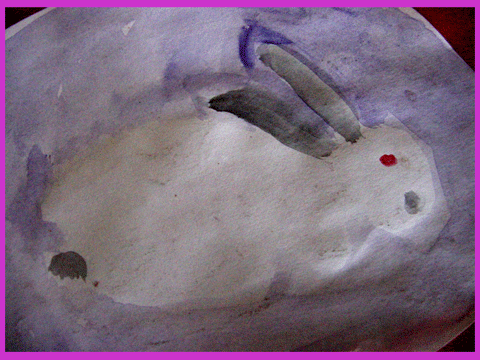SearchUser loginOffice of CitizenRest in Peace,
Who's new
|
REAL NEO RABBITSubmitted by Jeff Buster on Thu, 04/13/2006 - 12:03.

Look again…yep…here the rabbit comes out from under the wood stairs and begins hopping across the thin snow around the house. This was no wild rabbit so I got off the phone and out I went to see if I could catch the fella before he was hit by a car or chased down by a dog.
We contacted the neighboring town’s and made an effort to find the rabbit’s owner, but to no avail. These are still using analogue search technology...comments written on a piece of paper.
Craig’s list has no “lost and found” category. There needs to be a Google lost and found feature based on GIS which would allow entry of GIS coordinates and a search field...enter “rabbit” in the search field and all lost and found rabbits sorted by radius from your GIS location would come up. This feature would be good for lots of stuff like shopping for used cars, etc.
Actually, he (or she) was pretty friendly and I was able to coral him into the garage where he has become the neighborhood focus of youngsters. He took on the name “Hopper”. Why not? He lets Martha pet him, and he does like carrots (also cauliflower but not leeks). Heinen's even has pellet rabbit food !
The watercolor above is Martha’s portrait of Hopper, and I tell you the painting really captures Hopper as a fuzzy furry fella with long grey ears, pink eyes, and a silly black tail.
How in the world did colored eggs and bunnies become connected symbolically with the religious celebrations surrounding this time of spring?
Well anyway, Hopper’s a REAL NEO RABBIT!
( categories: )
|
Recent commentsPopular contentToday's:All time:Last viewed:
Recent blog posts
|
easter traditions like many others are pagan
Here's some info on the origin of the Easter traditions. I'm glad you have decided to keep Hopper. If you change your mind, visit ohare.org and see about the rabbit rescue matchmaking work Kristen Doherty does in NEO.
Nice watercolor, Martha!
There has been much speculation about the connection between the name "Easter" and an ancient Anglo-Saxon lunar and spring goddess named Eastre, Eostre, or Ostara. Her name has come down as Ostern or Easter, the English name of the Christian Holiday Season. Eostre, apparently is a European version of Astarte/Isis and some even associate her with the Hindu goddess Kali. Eostara is a lunar holiday, honoring a lunar Goddess at the Vernal Full Moon. The Church placed the Easter celebration on the Sunday, following the Vernal Equinox. Thus Easter is always the first Sunday, after the first full Moon, after the Vernal Equinox. If Easter Sunday were to fall on the Full Moon itself, Easter will be postponed to the following Sunday instead.
Eostre's chief symbols were the hare, both for fertility and because her worshipers saw a hare in the full moon, and the egg, symbolic of the cosmic egg of creation. Related terms are "estrus" and "estrogen," the female hormone. Not only is estrus related to reproduction, it is also seasonal and in the case of humans (one of the few animals that does not exhibit strict seasonal reproduction) it is also approximately lunar.
Early Anglo-Saxon people at this time of year used to honor Eostre at the first Spring full moon, when mother Earth awakened and the first green and spring flowers appeared. Eggs were used in these celebrations because they represented the beginning of life. The Easter rabbit is most commonly believed to be a symbol of fertility, and in ancient Egypt it represented birth and new life. Because they have been associated with fertility for centuries, eggs symbolize the beginning of Earth's fertility period in many areas of the world. The hare (Osterhase) and the Easter bunny, eggs, newly hatched chicks (the tiny yellow fluffs were not playthings, they would grow up in the hen house) all are symbols of birth and rebirth.